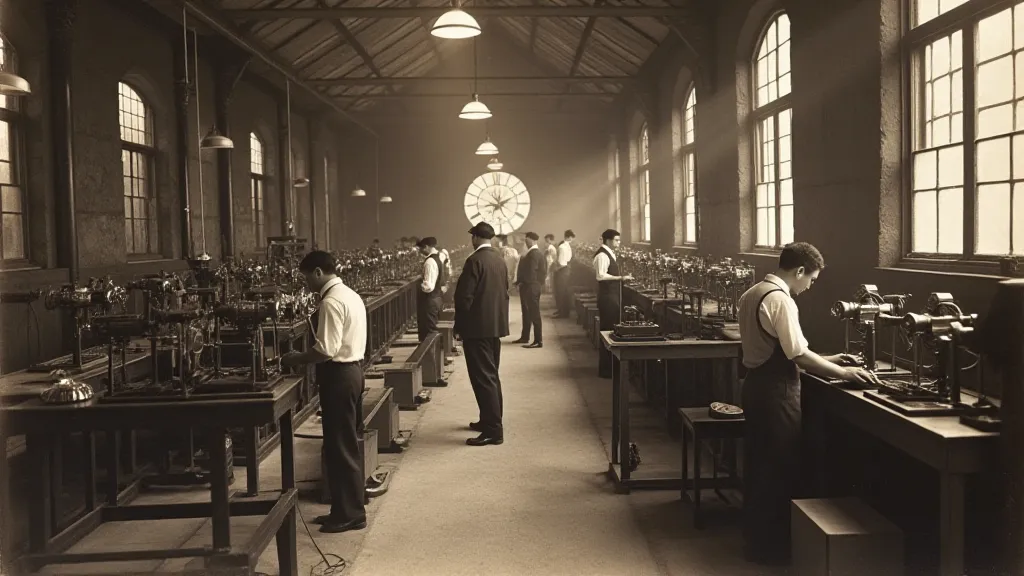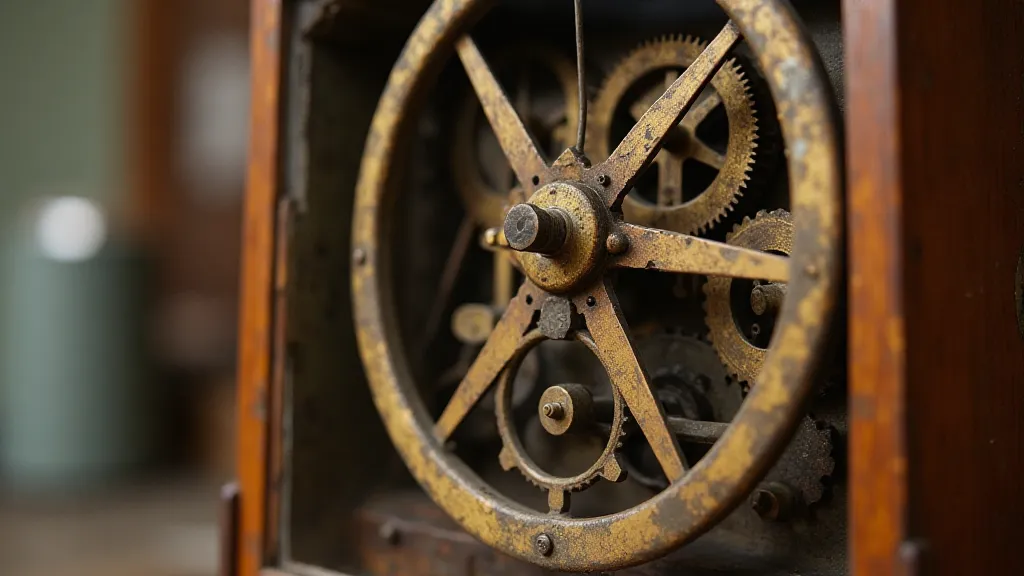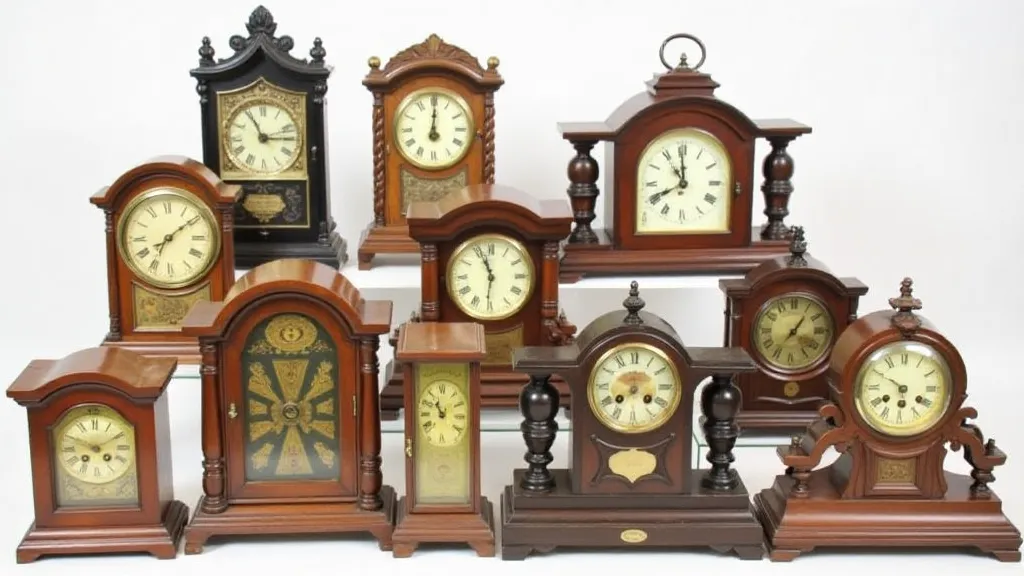The Impact of Industrialization on Clockmaking
Before the 19th century, clockmaking was a highly skilled craft, largely the domain of individual artisans and small workshops. Clocks were labor-intensive to produce, making them expensive and accessible primarily to the wealthy. The advent of the Industrial Revolution dramatically altered this landscape, ushering in an era of mass production, new technologies, and significantly impacting the style, affordability, and prevalence of antique clocks we collect today.
From Craft to Factory: The Technological Shift
The Industrial Revolution, spanning roughly from the late 1700s to the mid-1800s, brought with it a wave of innovations that fundamentally changed manufacturing processes. Several key technological advancements revolutionized clockmaking:
- Standardization of Parts: Prior to industrialization, each clock part was meticulously hand-finished, often unique. The concept of interchangeable parts, first championed by innovators like Eli Whitney, allowed for mass production, reducing the need for skilled artisans to individually craft each component. While full interchangeability wasn’t immediately adopted in clockmaking, its principles gradually transformed the industry.
- Power Machinery: Water power and, later, steam power, replaced manual labor in numerous stages of clock production. Lathes, drills, and other machinery automated processes like gear cutting and case shaping, drastically increasing output and lowering costs.
- Improved Metallurgy: The development of new techniques in metalworking and the creation of stronger, more durable alloys also contributed to improved clock components.

The Rise of Mass-Produced Clocks
The combination of these technological advances led to the rise of larger-scale clock manufacturing businesses. Companies like Seth Thomas, E. Howard & Co., and Waterbury Clock Manufacturing Company emerged, capable of producing clocks in significantly higher volumes. This mass production drove down prices, making clocks accessible to a broader segment of the population.
The shift to mass production had a direct impact on the aesthetics of antique clocks. While earlier clocks often featured intricate hand-carvings and elaborate designs, mass production led to more standardized and often simpler designs. Case designs became less ornate, and intricate details were replaced with more easily replicated features. This wasn’t necessarily a decline in quality, but rather a reflection of the changing priorities of the industry - efficiency and affordability.
Impact on Clock Styles & Mechanisms
The Industrial Revolution also influenced the types of clock mechanisms commonly found in antique clocks. The invention of the pendulum escapement was crucial earlier, but advancements in manufacturing allowed for even more precise and reliable movements. The development of the "American" style shelf clock, characterized by its simple design and affordable price, is a direct consequence of industrial manufacturing techniques. These clocks were designed to be produced quickly and efficiently, making them incredibly popular throughout the 19th century.

The Legacy of Industrialization
The Industrial Revolution fundamentally reshaped the clockmaking industry, transforming it from a craft-based system to a factory-driven production model. The legacy of this period can be seen in the sheer number of antique clocks available today, their accessibility to a wider audience, and the distinctive characteristics of many 19th-century clock styles. Understanding this historical context is key to appreciating the nuances of identifying and valuing antique clocks.






